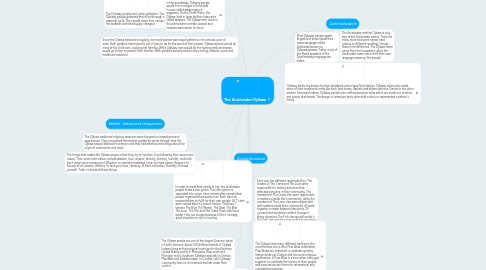The Anishinabe/Ojibwe
by Bianca Marquez

1. Social Structure
2. In order to meet their needs to live, the Anishinabe people made a clan sytem. The clan system is seperated into seven clans named after animals that people organized themselves into. Each clan has responsibilities to fulfil for their own people. All 7 clans were named after it's animal totems. There are 7 totems: The Bird, The Marten, The Deer, The Bear, The Loon, The Fish and The Crane. Each clan has a leader, they are chosen because of their courage, good character or skill in hunting.
3. Many Ojibway children like to join their fathers hunting or fishing. Ojibway kids did have toys to play with while older boys would like to play lacrosse.
4. The Ojibwa people are one of the largest America Indian in North America. About 150 different bands of Ojibwa Indians living at their original home land in the Northern United States mainly in Minnesota, Wisconsin and Michigan and in Southern Canada especially in Ontario, Manitoba and Saskatchewan. In Canada, each Ojibway community lives on it's reserves and are under their control.
5. Economy
6. The Ojibway people are hunter gatherers. The Ojibway people gathered their food through a seasonal cycle. They would move their camps as the weather and food supply changed.
7. In the woodlands, Ojibway people would live in villages of birchbark houses called waginogans or wigwams. On the Great Plains, the Ojibwe lived in large buffalo-hide tents called teepees. The Ojibwe who lived on the plains were nomadic people and teepees were easier to move.
8. Since the Ojibwe believed in equality, men and women were equal patterns in the annual cycle of work. Both genders had a specific set of jobs to do for the good of their people. Ojibwe women would do most of the child care, cooking and farming. While Ojibway men would do the hunting and sometimes would go to war to protect their families. Both genders would practice story-telling, artwork, music and traditional medicine.
9. Beliefs, Values and Uniqueness
10. The Ojibwe traditional religious practices were focused on inward personal experiences. They considered themselves guided by spirits through their life. Ojibwe people believed in creation and they had extensive teachings about the origin of ceremonies and ritual.
11. The things that makes the Ojibwe unique is that they try to live their lives following their seven main values. Their seven main values include wisdom, love, respect, bravery, honesty, humility, and truth. Each value has a meaning to it Wisdom: to cherish knowledge, Love: to know peace, Respect: to honour all of creation, Bravery: to face your foes, Honesty: to face a situation, Humility: to know yourself, Truth: to know all these things.
12. Each clan has different responsibilities. The leaders of The Crane and The Loon were responsible for making decisions that affected everyone in their community. The members of The Crane clan were responsible in matters outside their community, while the members of The Loon clan were responsible with matters inside their community. All work together to make balanced decisions. Of course there would be conflict, though in these situations The Fish clan would handle it. The Fish clan was also responsible for teaching the young ones.
13. Most Ojibway people speak English but some speak their native language called Anishinabemowin or Ojibewaymowin. Today, most of the fluent speakers of the Anishinaabeg language are elders.
14. Communication
15. The Anishinabe and the Ojibwa is only two of the Anishinabe names. There are many more and some names have various of different spellings, though there is no difference. The Ojibwa name came from the Europeans, while the Anishinabe name came from their own language meaning "the people".
16. Ojibway artists are known for their beadwork and unique floral design. Ojibway artists also made some of their traditional crafts like birch bark boxes, baskets and dreamcatchers. Similar to the other eastern American Indians, Ojibway people also crafted wampum belts which are made out of white and purple shell beads. The design of wampum belts often told a story or represented a person's family.
17. The Ojibwe have many different traditions, the most famous one is their Pow Wow celebration. Pow Wows are important in celebrating many Native American Culture and has some religious significance. A Pow Wow is a time when many get together to celebrate the history of their people and view various art forms for recreational and competative purpose.


